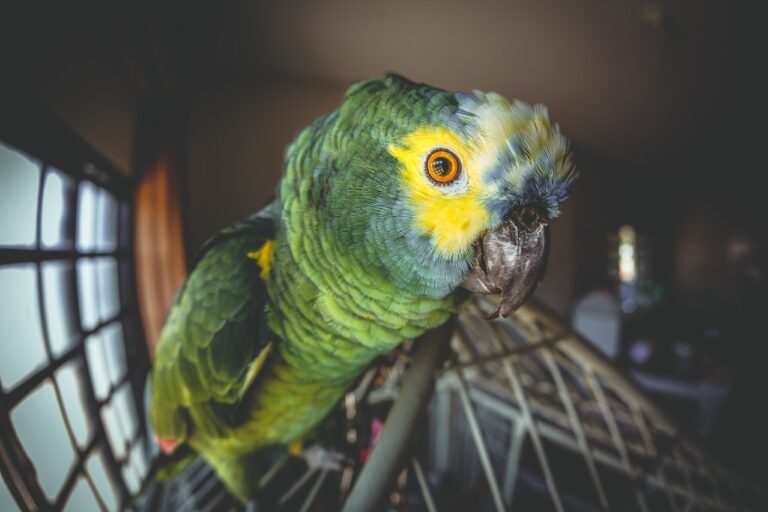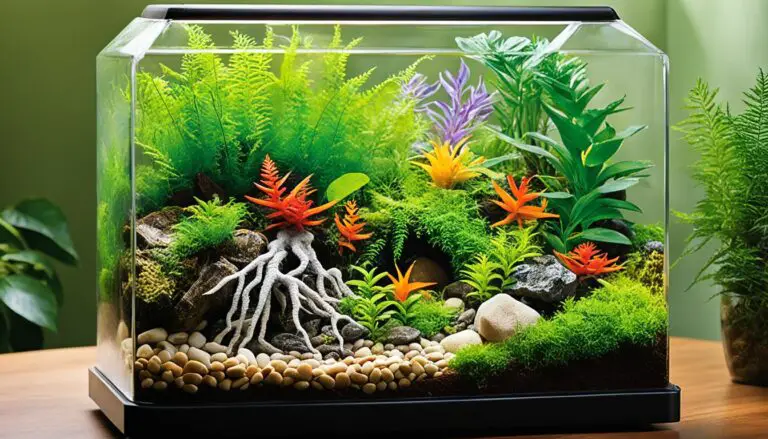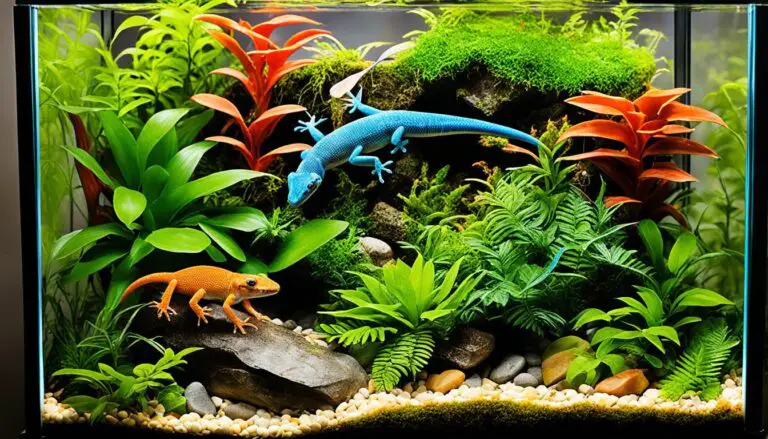Exotic Pet Habitat Setup: Essentials & Tips
Setting up a comfortable and secure habitat is crucial for the health and well-being of exotic pets. Beginners should pay extra attention to gathering all the necessary equipment and knowledge. Choosing the right enclosure is essential and should be based on the species of the exotic pet. Creating the ideal habitat environment requires attention to factors such as temperature, humidity, lighting, substrate, and decorations.
Key Takeaways:
- Setting up a proper habitat is important for the well-being of exotic pets.
- Choose the right enclosure based on the species of your exotic pet.
- Pay attention to temperature, humidity, lighting, substrate, and decorations to create an ideal habitat environment.
- Gather the necessary equipment and knowledge for successful habitat creation.
- Regularly maintain the habitat to ensure your pet’s health and happiness.
Reptile Habitat Setup: Choosing the Right Enclosure
When it comes to setting up a reptile habitat, one of the most important decisions you’ll make is choosing the right enclosure. Whether you’re considering tanks, enclosures, terrariums, or cages, selecting the appropriate housing for your reptile is essential for its health and well-being.
Each reptile species has unique needs when it comes to its enclosure. Factors such as size, materials, ventilation, and viewing options should be taken into consideration. By understanding these requirements, you can provide a comfortable and secure habitat that closely mimics the reptile’s natural environment.
Size is a crucial factor when selecting an enclosure. It should be spacious enough to accommodate the reptile’s growth and provide ample room for natural behaviors like climbing, burrowing, or basking. Consider the reptile’s expected size and activity level when choosing the appropriate enclosure size.
Materials also play a significant role in the well-being of your reptile. Opt for enclosures made from non-toxic materials that are easy to clean and maintain. This ensures a healthy and hygienic living environment for your scaly friend.
Ventilation is another important aspect to consider. Reptiles require proper airflow to regulate temperature and prevent the buildup of excess humidity. Look for enclosures that provide ventilation to promote fresh air circulation while maintaining optimal levels of humidity.
Viewing options are a matter of personal preference, but it’s important to choose an enclosure that allows you to observe and interact with your reptile easily. Enclosures with clear glass or acrylic panels offer unobstructed views while providing a safe and secure environment.
Remember that different reptile species have different enclosure requirements. Conduct thorough research on the specific needs of your reptile before making a decision. This will ensure that you create a suitable, species-specific habitat that promotes your reptile’s overall health and happiness.

Expert Tip:
If you’re unsure about the right enclosure for your reptile, consult with a reptile specialist or veterinarian. They can provide valuable guidance based on your pet’s species and individual needs.
Creating the Ideal Habitat Environment
Once you have selected the right enclosure for your reptile, it’s essential to create the ideal habitat environment. This involves considering various factors such as temperature, humidity, lighting, substrate, and decorations. By understanding and meeting the specific requirements of your reptile species, you can ensure a comfortable and thriving habitat.
Temperature
The temperature of the reptile habitat is crucial for maintaining your pet’s overall health and well-being. Different reptile species have specific temperature requirements, so it’s essential to research and understand the optimal temperature range for your pet. Use a reliable thermometer and heating sources like heat lamps or heating mats to maintain the appropriate temperature gradient in the enclosure.
Humidity
Reptiles thrive in specific humidity levels, which can vary depending on their natural habitat. Some reptiles require higher humidity, while others need drier conditions. Research your reptile’s species-specific humidity needs and monitor humidity levels using a hygrometer. Mist the enclosure with water or use a reptile-specific humidifier to maintain the required humidity range.
Lighting
Proper lighting is vital for reptiles as it affects their behavior, metabolism, and overall health. Most reptiles require both UVB and UVA light sources. UVB light is necessary for Vitamin D synthesis and calcium metabolism, while UVA light helps regulate daily activities and promotes natural behaviors. Install full-spectrum UVB and UVA lights in the enclosure, following the specific recommendations for your reptile species.
Substrate
Choosing the right substrate is essential for creating the ideal habitat for your reptile. Substrate options vary depending on the reptile species and can include materials such as coconut coir, reptile carpet, bark, or sand. Research your reptile’s specific needs and choose a substrate that promotes natural behaviors and is easy to clean and maintain.
Decorations
Adding decorations to the reptile habitat not only enhances its visual appeal but also provides enrichment for your pet. Decorations like branches, rocks, caves, and plants create a more natural and stimulating environment. Ensure that any decorations are safe and non-toxic for your reptile. Research the specific preferences of your reptile species and arrange the decorations accordingly to mimic their natural habitat.
In order to provide the best possible habitat for your reptile, it’s crucial to research and understand the specific requirements of your pet’s species. By creating the ideal habitat environment with the right temperature, humidity, lighting, substrate, and decorations, you can ensure your reptile’s health, happiness, and overall well-being.
Now that you know how to create the ideal habitat environment, the next section will focus on maintaining the reptile habitat to ensure your pet’s long-term wellness.

| Reptile Species | Temperature | Humidity | Lighting | Substrate | Decorations |
|---|---|---|---|---|---|
| Bearded Dragon | 95-105°F | 30-40% | UVB and UVA | Reptile carpet or sand | Branches, rocks, caves |
| Leopard Gecko | 88-92°F (basking); 70-80°F (cool side) | 30-40% | UVB and UVA | Reptile carpet or paper towel | Shelter, hides, rocks |
| Crested Gecko | 75-80°F (day); 65-70°F (night) | 50-70% | UVA (no UVB required) | Coco fiber or moss | Live plants, branches |
Maintaining the Reptile Habitat
Regular maintenance is crucial for the well-being of your reptile and the overall health of their habitat. By following a few simple steps, you can ensure a clean and safe environment for your scaly friend. Here are some essential maintenance tasks to keep in mind:
Cleaning the Reptile Enclosure
Regularly cleaning the reptile enclosure is vital to prevent the buildup of waste, bacteria, and parasites. Remove any uneaten food, feces, and shed skin from the enclosure using a soft brush or sponge. Use a reptile-safe disinfectant to clean all surfaces. Remember to rinse thoroughly and avoid any harmful chemicals that could harm your pet.
Substrate Replacement
The substrate, or bedding material, in the reptile enclosure should be replaced regularly to maintain cleanliness and prevent odors. The frequency of substrate replacement depends on the type of substrate and the size of the enclosure. Remove and replace soiled or wet substrate as needed, and ensure that the new substrate is suitable for your reptile’s species.
Temperature and Humidity Monitoring
Monitoring the temperature and humidity levels in the reptile habitat is essential for your pet’s health. Invest in a reliable thermometer and hygrometer to accurately measure these parameters. Make adjustments as necessary to maintain the optimal temperature and humidity range specific to your reptile species. Regularly check and calibrate your monitoring devices to ensure accurate readings.
Observing the Animal’s Behavior
Regularly observing your reptile’s behavior is an important part of maintaining their habitat. Look for any signs of distress, illness, or abnormal behavior. Changes in eating habits, lethargy, excessive shedding, or aggression may indicate an underlying health issue. If you notice any concerning behavior, consult with a qualified reptile veterinarian for proper diagnosis and treatment.
By performing regular habitat maintenance tasks such as cleaning the enclosure, replacing the substrate, monitoring temperature and humidity levels, and observing your reptile’s behavior, you can ensure their well-being and create a thriving habitat for them to enjoy.
Conclusion
Creating an ideal habitat for exotic pets, especially reptiles, is essential for their health and well-being. By considering various factors such as the right enclosure, habitat environment, and regular maintenance, pet owners can provide a comfortable and secure space for their scaly companions.
Choosing the right enclosure is the first step in creating a reptile habitat. Consider the specific needs of the reptile species and select an enclosure that provides adequate space, ventilation, and viewing options.
Once the enclosure is set up, it’s crucial to create the ideal habitat environment. Pay attention to factors like temperature, humidity, lighting, substrate, and decorations. Research the specific requirements of the reptile species and make appropriate adjustments to maintain optimal environmental conditions.
Maintaining the reptile habitat through regular cleaning, substrate replacement, and monitoring of temperature and humidity levels is vital. Additionally, observe your pet’s behavior for any signs of distress or illness. Regular maintenance ensures a healthy and happy reptile.
For further information and resources on creating an ideal reptile habitat, we recommend contacting Reptile Super Show. Their knowledgeable team can provide valuable tips and guidance to ensure your reptile’s habitat is optimized for its well-being.
FAQ
What are the essential components of setting up an exotic pet habitat?
What factors should be considered when selecting an enclosure for a reptile habitat?
What factors need to be considered when creating the ideal habitat environment for a reptile?
How important is regular maintenance in keeping a reptile habitat clean and safe?
How can I ensure the health and well-being of my exotic pet when creating a habitat?
Source Links
- https://www.fishbowlpet.com/blogs/news/the-cheat-sheet-for-the-perfect-reptile-habitat/
- https://reptilesupershow.com/essential-reptile-habitat-setup-guide-tips/
- https://www.arlingtonvet.com/how-to-create-the-perfect-environment-for-your-pet-reptile/
Peter Stones is the founder of Exotic Pets Place, the leading online resource for exotic pet care information.
With over 10 years of hands-on exotic pet ownership experience, he is deeply passionate about sharing his expertise to help others properly care for their unusual pets.
When he's not writing extensively researched articles or connecting with fellow exotic pet enthusiasts worldwide, you can find Peter at home tending to his own beloved menagerie of exotic animals.

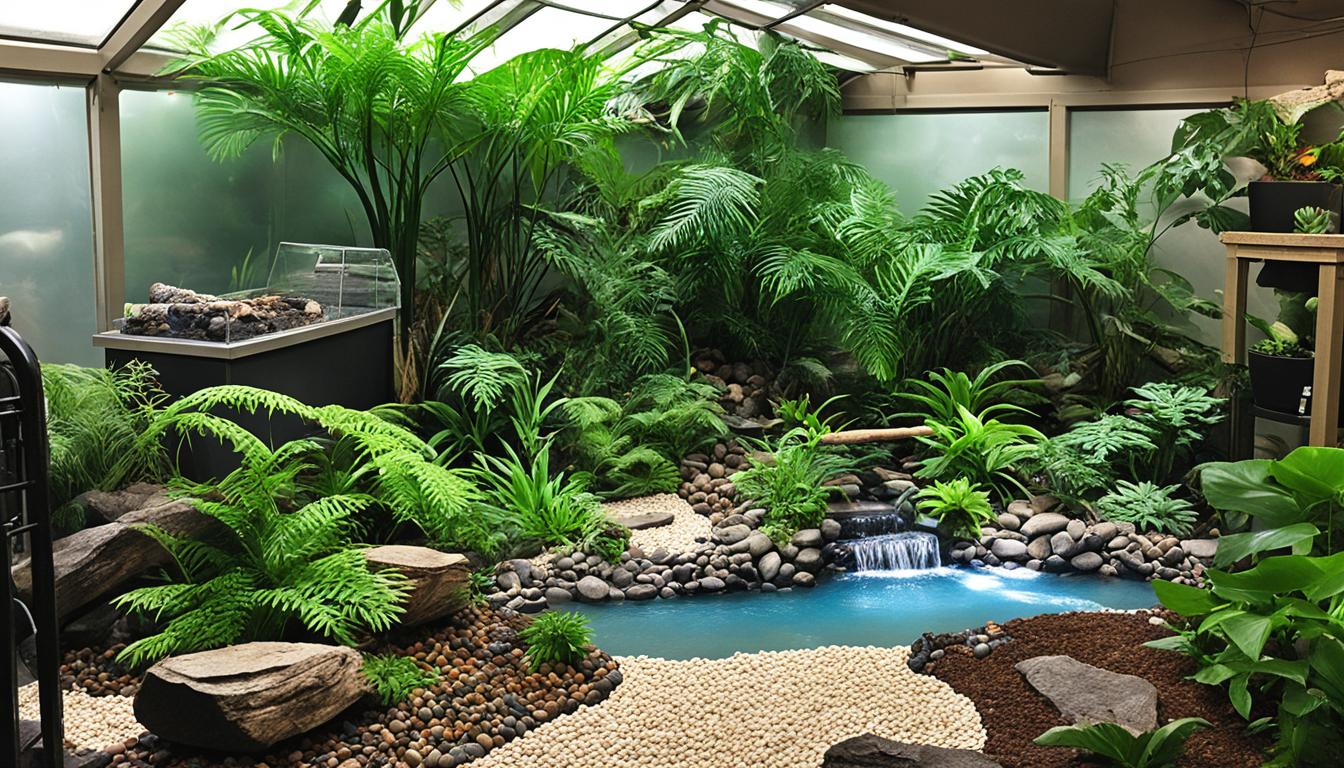
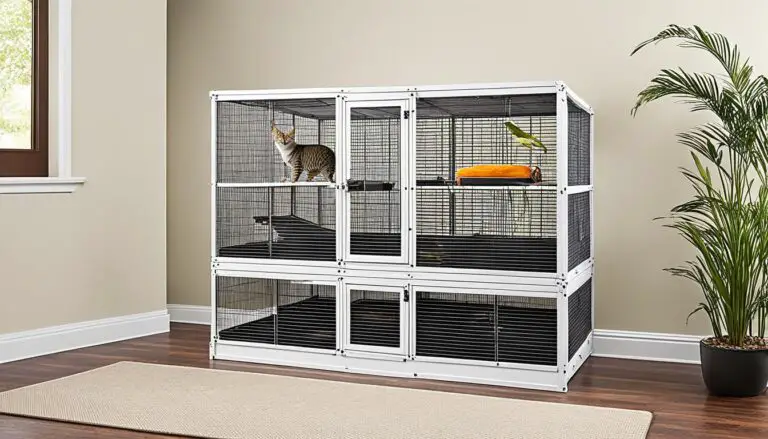
![How to Create a Safe Outdoor Space for Your Exotic Pet [Guide], wood house with a porch](https://exoticpetsplace.com/wp-content/uploads/2023/06/How-to-Create-a-Safe-Outdoor-Space-for-Your-Exotic-Pet-Guide-wood-house-with-a-porch-768x512.jpg)

